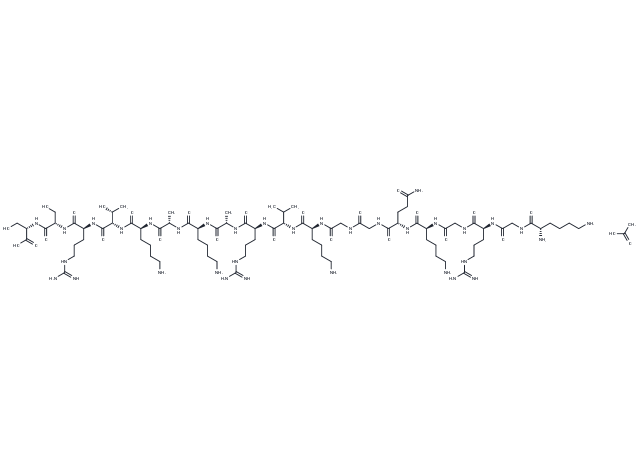keep away from moisture
Powder: -20°C for 3 years | In solvent: -80°C for 1 year

Parasin I acetate is a potent 19-residue antimicrobial peptide isolated from the skin mucus of wounded catfish (Parasilurus asotus).

| Pack Size | Availability | Price/USD | Quantity |
|---|---|---|---|
| 1 mg | In stock | $ 126.00 | |
| 5 mg | In stock | $ 430.00 | |
| 10 mg | In stock | $ 636.00 | |
| 25 mg | In stock | $ 987.00 | |
| 50 mg | In stock | $ 1,360.00 | |
| 100 mg | In stock | $ 1,830.00 | |
| 500 mg | In stock | $ 3,680.00 |


| Description | Parasin I acetate is a potent 19-residue antimicrobial peptide isolated from the skin mucus of wounded catfish (Parasilurus asotus). |
| In vitro | Parasin I with comparable antimicrobial activities localized to the cell membrane and subsequently permeabilized the outer and cytoplasmic membranes. Parasin I and its active analogs show strong cytoplasmic membrane permeabilizing activity[1]. Codon optimized parasin I fused with human lysozyme is expressed in Pichia pastoris, and has potent antibiotic activity[2]. |
| Molecular Weight | 2060.36 |
| Formula | C84H158N34O26 |
| CAS No. | TP1365L |
keep away from moisture
Powder: -20°C for 3 years | In solvent: -80°C for 1 year
DMSO: Insoluble
H2O: 10 mM
You can also refer to dose conversion for different animals. More
bottom
Please see Inhibitor Handling Instructions for more frequently ask questions. Topics include: how to prepare stock solutions, how to store products, and cautions on cell-based assays & animal experiments, etc.
Parasin I acetate(219552-69-9 free base) TP1365L Microbiology/Virology Antibacterial Parasin I acetate(219552699 free base) Parasin I acetate(219552 69 9 free base) inhibitor inhibit
